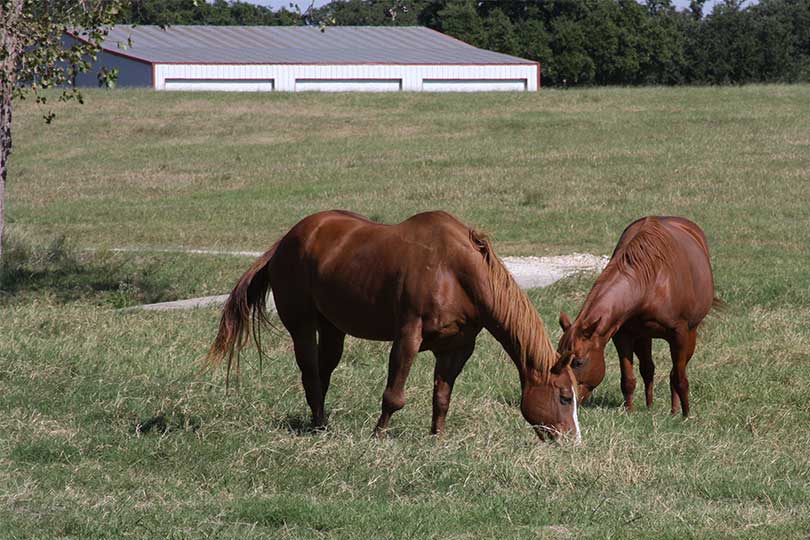For the first time this year, a case of Eastern Equine Encephalitis (EEE) has been confirmed in Texas.
A horse near Beaumont in Hardin County was diagnosed with the neurological disease Aug. 4, according to the Texas A&M Veterinary Medical Diagnostic Lab (TVMDL).
The horse had not been vaccinated for the neurological disease, according to the lab.
Of all the neurological diseases that can affect horses, TVMDL reports EEE has the highest mortality rate.
Symptoms of EEE include: droopy lips, dullness, muscle twitching, loss of control of bodily movements and head pressing.
Diagnostic testing is needed for a definitive diagnosis as other diseases carry similar symptoms.
EEE is a viral disease that usually cycles between wild birds and mosquitos.
“As the virus infection rate increases in birds, it is more likely to be transmitted by an infected mosquito that bites horses and humans,” TVMDL writes. “The virus abruptly attacks the central nervous system.”
The disease cannot be passed from horse to horse, horse to human or from a horse back to a mosquito.
Highly-effective vaccines for EEE and other equine diseases, such as Western Equine Encephalitis and West Nile virus, are available.
TVMDL encourages horse owners to consult with a veterinarian to determine vaccination needs.
In 2016, TVMDL confirmed six cases of EEE in Texas horses. The year before, in 2015, there were seven confirmed cases of EEE.
Although it is possible, human infection with EEE is rare, according to the Centers for Disease Control and Prevention (CDC).
EEE is transmitted to humans via the bite of an infected mosquito, per the CDC.
Only a few cases each year are reported in the United States. Of those, most are reported in Atlantic and Gulf Coast states including: Louisiana, Arkansas, Missouri, Florida, Georgia, the Carolinas, Vermont and Michigan.

